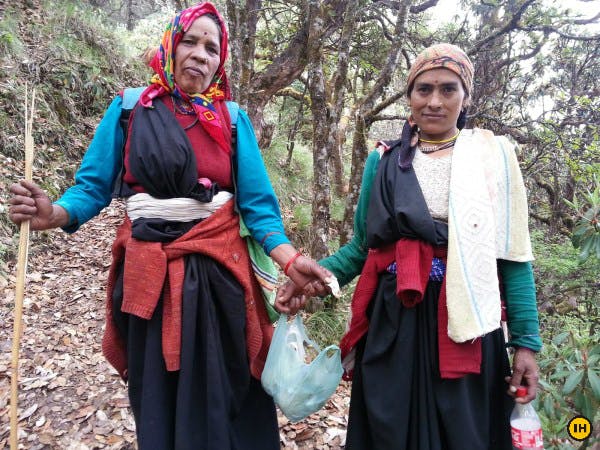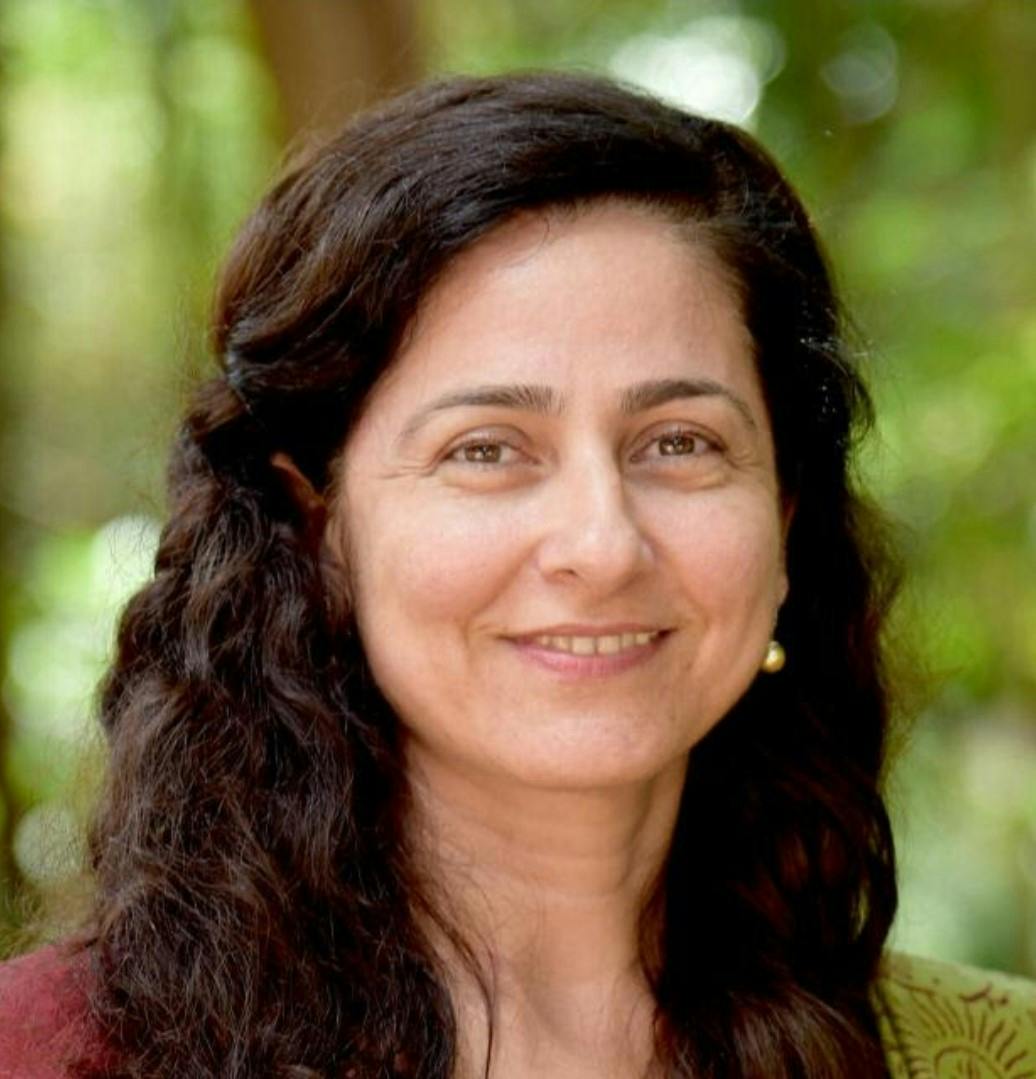A personal account of the first Green Trails project
Share this story
A personal account of the first Green Trails project
Category Green Trails Green Trails Impact Reports
By Izzat Yaganagi
2013-07-04
Cleaning up the mountains was gratification at its best
Planning for the Green Trails Project was an interesting and intense part of many of our meetings at Indiahikes. The motivating force for this was a deep concern that the very mountains that inspire us would soon become a reflection of the pathetic disregard most humans have for nature.
A few of you may not know, but most regular trekking trails have become an eyesore. More and more trekkers are returning with water-borne diseases; this was unheard of in the past. This means our water sources are getting polluted, at their source.
So we thought, the mountains give us so much and it’s high time we give something back to the mountains – and to ourselves.
We explored pee and poo solutions, tried out bacteria strains at home and at the Goecha La trek. We checked if it helps speed up degradation, sourced eco-friendly soap and toothpaste. We tried out new toilet designs and consulted people on how to clean the slopes and sustain the process.
Though my involvement in meetings was mostly as the editor at Indiahikes, editing began to take a backseat. My concern for the mountains took over. I couldn’t turn a blind eye towards the pollution issue any more and I knew something had to be done.
As the Roopkund Green Trails trek drew nearer, my restlessness increased. I just had to go on this trek. It meant so much to me (and to the rest of the staff of course). The stars did not seem to line up till the last minute and when they did, there was no turning back! It was time to put all our talking and brainstorming to test.
And so it begins
Several trekkers volunteered to be part of the pilot Green Trails project – some renowned in the field of ecology, some conservation and some, nature. The enthusiasm was palpable. The phone was off the hook. “Do we have enough garbage bags?” “How do we carry the bags back?” “What do we need to bring along?” I had some clue of what was expected but did not know how things would actually turn out in the mountains.
The evening before leaving, we searched for big gunny bags and gloves for the team. Bangalore’s pouring rain kept us company that evening. All the way to Lohajung from Kathgodam, our cab kept halting at small towns to collect more empty bags. I think that is when Green Trails actually started –we told shopkeepers that we needed big bags because we were going to clean the mountains. I wonder if this is why none of them asked for payment for the bags.
The weather in Lohajung was surprisingly perfect. I felt a distinct excitement of being in the mountains, mixed with a little anxiety – hoping all would go well – and knowing that this first step would set the tone for what was to come in future.
Lohajung
The briefing by our trek leader, Rahul, at Lohajung base camp set the tone for the rest of the trek – combo of seriousness and fun. All volunteers were given bags to pick garbage along the trail and off we went!
We were very fortunate to have Bhuwan Singh Bisht, the Sarpanch of Didina and Kulling villages, with us on the trek. His wholehearted involvement and radiant spirit were highly contagious. You can have a look at his interview below.
The team set to work immediately and the bags were half-filled within half an hour of the trek. This was a very disturbing trend throughout. Trails closest to human settlements are most polluted. Plastic packets, sweet wrappers, Gutkha and juice packets were strewn all over the trail and around it, attracting flies in swarms! There was a lot of work to do and we were all determined to make a difference and restore beauty on the trails.
Didina
Didina, situated at a height of 2,453 m, was our first camp site. It’s a beautiful village with about 40 houses. The whole team came in, exhausted from carrying full bags of garbage while climbing. They emptied the garbage into a big bori (bag).
After lunch, the team was divided into two groups. One, led by Sarath, went around the village clearing garbage, especially from the water bodies and drains. There are no local agencies in charge of waste management in the entire region.
The other group visited homes in the village along with Bhuwan Singh Ji and interacted with the people, listening to their stories and experiencing their hospitality. I don’t think I will ever forget Roopa devi with her ready laughter and carefree spirit. Others on the trek had similar experiences.
Most villagers told us that they either buried plastic or burned it along with other waste. Some knew (through their school-going children) that they needed to segregate and send non-biodegradable waste for recycling. But there was no one collecting waste. Many blamed pilgrims, trekkers and cooks at camps for pollution at camp sites.
It was up to the trekkers to convince them about the need of the hour – proper waste management. Initially, just a few in the group spoke. But gradually, confidence built up, and the group split into two’s and three’s and they all became experts at involving villagers in conversations on the dangers of pollution, plastic, need for segregation, need for taking responsibility, etc. Needless to say, all of us
We assured them that Indiahikes and the sarpanch would collaborate and find a way to get the waste down to Lohajung. We encouraged them to take responsibility of admonishing trekkers and others who polluted their environment.
Some women said they felt shy to do that, but that they would not just watch silently any more. That sounded like music to my ears. Once women rise there is hope!
Immediate effects
The next day,while climbing from Didina to Ali top, we met Kasturadevi, in whose home we were served hot chai. It was heartwarming to see her and Gangadevi grazing their cows and carrying a bag to collect plastic waste on the way.
The picture below speaks better than words.
Bedni
Bedni was one of the two campsites identified for a complete clean-up operation. It was only after we reached that we realised why. The place was a mess! This was definitely purely trekker mess. So irresponsible! Such blatant disregard for nature! Where does this attitude come from? Can it change?
Though the team was given time to rest, the enthusiasm to get started spurred everyone on. So, without rest, bags and boris in hand, we all swung into action! In about two hours, Bedni was transformed. Seven huge boris of garbage stood witness to the team’s tireless efforts. I remembered Arjun Majumdar’s words, “A team of trekkers is like a big vacuum cleaner.”
After this exercise, we all got together to brainstorm and share ideas. I felt so privileged to be part of such a varied and dedicated group. With hilarious entertainers, serious no-nonsense workers and aspiring radio artistes, the team of a wonderful mix and match of professions.
After a brief game of cricket, a few determined volunteers went to the Nanda Devi Temple and Bedni Lake area and scoured the stream to collect another 5 boris of garbage that was choking the stream.
As it began to rain and the temperature, the team decided to clean up the rest of Bedni while returning from Roopkund. The difference was amazing to see. It was such a pleasure to return to a clean Bedni.
Bagwabasa
This was a challenging campsite to clean. We were hampered by rocky terrain, rain, slush and very low temperatures.
Since several trekking companies camp here before heading to Roopkund, the campsite looked pathetic. But this did not turn down the team’s spirit. The garbage-filled site against the backdrop of serene mountains was so disturbing. So much so that despite an upcoming arduous Roopkund climb, everyone got into action after a brief rest and refreshment. We also interacted with trekkers from a different trekking company. They were initially skeptical, but later appreciated the initiative Indiahikes was taking – and assured us that they would make sure to not add to the litter.
On our return, after leaving the beautiful campsite of Gehroli Patal and passing Neel Ganga – constantly picking up wrappers, plastics and leaving the trails spotlessly clean – our bags got full. We had no more bags. It was such a struggle to turn a blind eye and walk on. However, I could see a glimmer of hope in everyone’s eyes.
This would soon become a sustained process.
So, three cheers to the Green Trails team and to all others who supported and encouraged and clicked photos! The trek was exhilarating in every way and I’d do it again any day! I know everyone else feels the same too.
Sign up for our much loved Weekly Mailer
We have terrific trekking tips, trek updates and trek talks to look forward to

